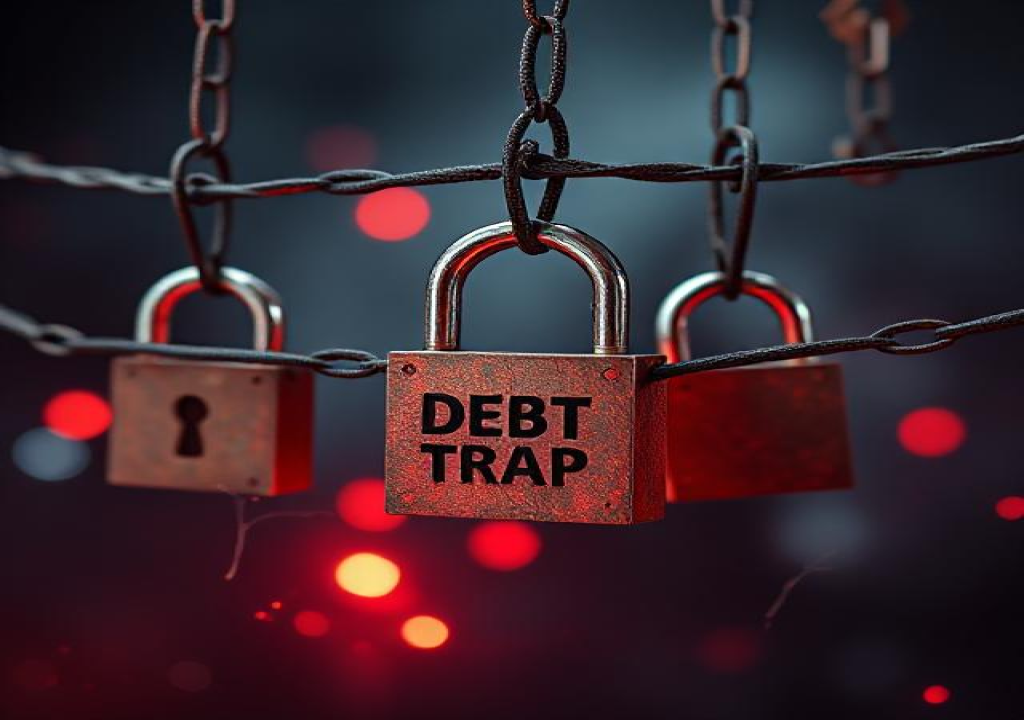In today’s consumer-driven society, it’s all too easy to fall into the debt trap. With credit cards, personal loans, and enticing financing offers readily available, many people find themselves caught in a cycle of borrowing that can feel impossible to escape. Understanding the signs of the debt trap and how to avoid it is essential for maintaining financial health. Let’s explore what the debt trap is, how it affects individuals, and the steps you can take to protect yourself.
What is the Debt Trap?
The debt trap refers to a situation where individuals continuously borrow money to pay off existing debts, leading to a cycle of increasing financial obligations. This often occurs when the borrower relies on credit to cover everyday expenses or unexpected costs, resulting in a spiraling debt burden. Signs that you might be falling into the debt trap include:
- Using Credit to Pay Bills: If you find yourself using credit cards to cover monthly expenses because you can’t make ends meet, it’s a warning sign.
- Only Making Minimum Payments: Paying only the minimum amount on credit cards or loans means that you’re not making significant progress on your debt and will incur more interest over time.
- Taking Out New Loans to Pay Old Ones: If you’re taking out new loans to pay off existing debts, it’s a clear indication that you’re trapped in a cycle of borrowing.
- Feeling Overwhelmed or Anxious About Finances: Constantly worrying about your debt can lead to significant stress, affecting your mental health and overall well-being.
The Effects of the Debt Trap
Falling into the debt trap can have serious consequences that extend beyond your bank account. Some of the potential effects include:
Financial Instability
The most immediate consequence of being trapped in debt is financial instability. As debt accumulates, it can become increasingly challenging to manage monthly payments, leading to missed payments, late fees, and a damaged credit score.
Emotional Stress
Debt can take a toll on mental health. The constant worry about finances can lead to anxiety, depression, and relationship strain. Many people feel isolated when dealing with financial issues, which can exacerbate these feelings.
Limited Opportunities
Being in debt can restrict your financial freedom. It may prevent you from pursuing opportunities like buying a home, starting a business, or traveling, as lenders may see you as a high-risk borrower.
Increased Financial Costs
As debt compounds, so does the cost. High-interest rates on credit cards and loans can lead to a situation where you pay significantly more than you originally borrowed.
How to Avoid the Debt Trap
To protect yourself from falling into the debt trap, consider these proactive steps:
Create a Realistic Budget
Establish a monthly budget that accounts for all your income and expenses. This will help you understand where your money is going and identify areas where you can cut back. Stick to your budget to avoid overspending.
Build an Emergency Fund
An emergency fund can serve as a financial cushion during unexpected expenses, such as medical emergencies or car repairs. Aim to save at least three to six months’ worth of living expenses to prevent the need for credit.
Limit Credit Card Use
While credit cards can be useful for building credit and making purchases, relying on them can lead to debt. Use credit cards only for planned expenses that you can pay off immediately to avoid accruing interest.
Educate Yourself on Financial Literacy
Understanding financial principles, such as interest rates, loans, and budgeting, can empower you to make informed decisions. Keep following reputable financial blogs like Agmon blog for more insightful content on debt management and other related articles.
Seek Help if Needed
If you’re already in the debt trap, don’t hesitate to seek professional help. Credit counselors can assist you in creating a debt management plan and offer strategies to regain control of your finances.
Be Mindful of Lifestyle Inflation
As your income grows, it can be tempting to increase your spending. Practice mindfulness by assessing whether new expenses align with your long-term financial goals.
Conclusion
The debt trap is a pervasive issue that can affect anyone, but with awareness and proactive steps, you can protect yourself from its grip. By managing your finances responsibly and seeking support when needed, you can break free from the cycle of debt and build a more secure financial future. Remember, staying informed and making conscious financial choices is key to avoiding the debt trap—Be prepared to take control.

